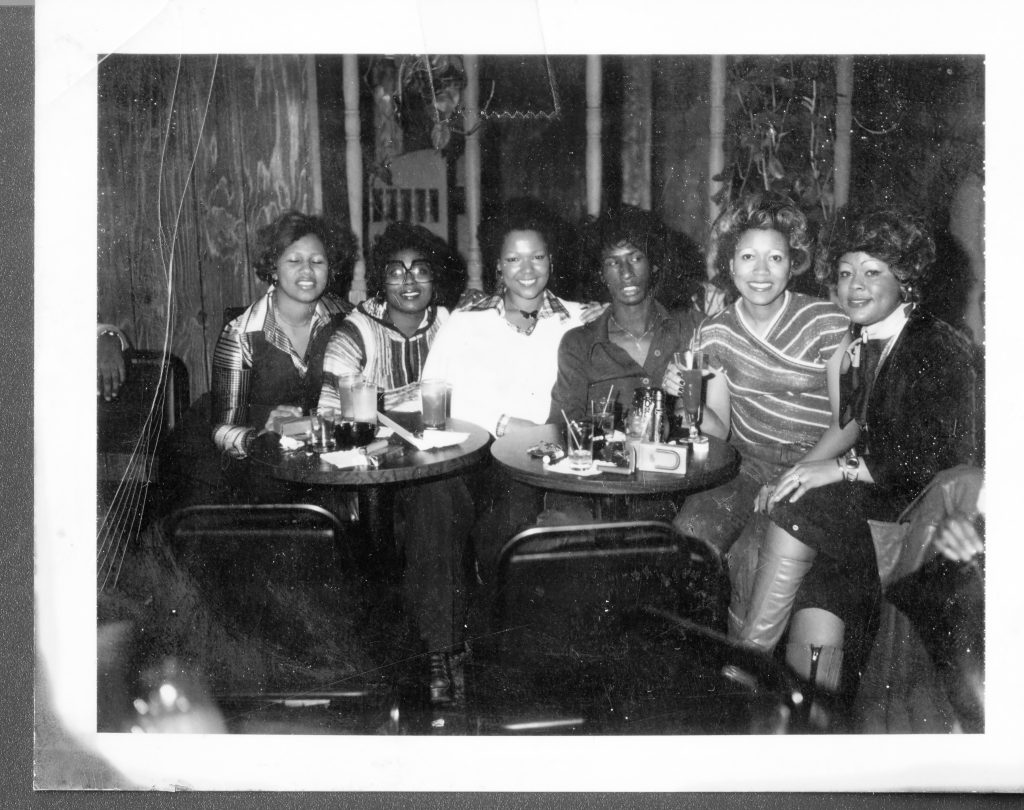By Natalie R. Bell
A stunning new photo exhibit, “Faces of North Nashville,” features forty photographs that span the latter half of the 20th century, celebrating the joy of family and community in the city’s historically Black community. The individual portraits are juxtaposed with landmarks on Jefferson Street. Each photo provides a window into the light of the community.
Some examples include workers at a drycleaning business who exude pride, lined up for an impromptu snapshot. Black-owned Hemphill Press is the subject of a 15 x 20 portrait mounted on shimmering metal. Another portrait spotlights holiday shoppers who dress to be seen. They stop and greet friends inside a retail store. Everybody knew everybody. At the end of the day, a good time could still be had at a neighborhood tavern.
The exhibit is presented by Cashville, Etc., a marketing business with its own line of casual gear. The business was started and is operated by Carlos Partee. Partee was born in 1993 and grew up partly in North Nashville, though he’s also lived on the city’s east side, and in Hermitage. Multiple family members endeared in him a deep sense of identity with North Nashville, he said, noting that he is a grand nephew of the “Night Train to Nashville” television show host Noble Blackwell, and a grandson of WVOL radio disc jockey Reginald Utley.
Partee’s vision for “Faces of North Nashville,” and for his Cashville Etc. brand, is two-fold: to remind Nashville natives displaced by the city’s rapid growth of some of the reasons they can still be proud of their hometown, and to “bridge the gap” with newcomers, or “transplants” as he calls them. “A lot of newcomers don’t know what existed here before,” he said, adding that he wants to preserve that knowledge so others can see it for the future to come.
“You have to understand where we come from…to understand where we’re trying to go,” he continued.
The exhibit showcasing the legacy of North Nashville has been in the works since 2017, Partee said. This is bigger than the pop-up Black business marketplaces that Partee’s Cashville Etc. business organizes at the city’s Farmers Market.

He and his team worked to bring the exhibit to life this year when he wrote a proposal to the 37208 Fund, a new private, micro grant program that aims to support people who live and work in 37208, who’re working to make a difference in the area. Partee was granted funding for his photo project.
Photographs were selected from institutional, as well as family sources. The Fisk University Special Collections and Archives became a partner. And, two families related to Partee, the McLemores and the Lewises, shared their private collections.
When he approached his relatives, Partee said, “At first it was hard to get them to let me look at their photos.” So, he brought in Michael Ewing, a Fisk University graduate, and an experienced arts curator trained to work with archival photographs.
Even though Partee’s intent is, in part, to give voice to people who’ve been pushed out of their neighborhoods, Ewing pointed out, “There’s no language about gentrification in the exhibit.”
“It’s about Black joy. Family. Intimacy. Black love.”
It’s also about empowering Black people, said Ewing, not by disparaging the split-up of Black Nashville’s community, but by celebrating the importance of what it once was. Partee believes he and Ewing are on the right path. While working on the exhibit, he learned he has a great aunt who ran a beauty salon on Jefferson Street and her husband operated a shoe store in the neighborhood. Another great uncle (Carlton McLemore) owned several rental properties and, at one time, ran a nightclub on 15th Ave., N. called The Beer Garden.
“Faces of North Nashville” opened Nov. 19th at a gallery inside The Art Space at 100 Taylor Street, in Germantown. The show was scheduled to close December 30th, but has been extended to Jan. 15th.
Co-curators Partee and Ewing say they hope educators will bring in students. The goal is to inspire the next generation.
They’re thinking about staging an installation where community members would be invited to bring their own family photos and share stories. They’d like to expand the show, go on tour, and even move it around to different galleries.


